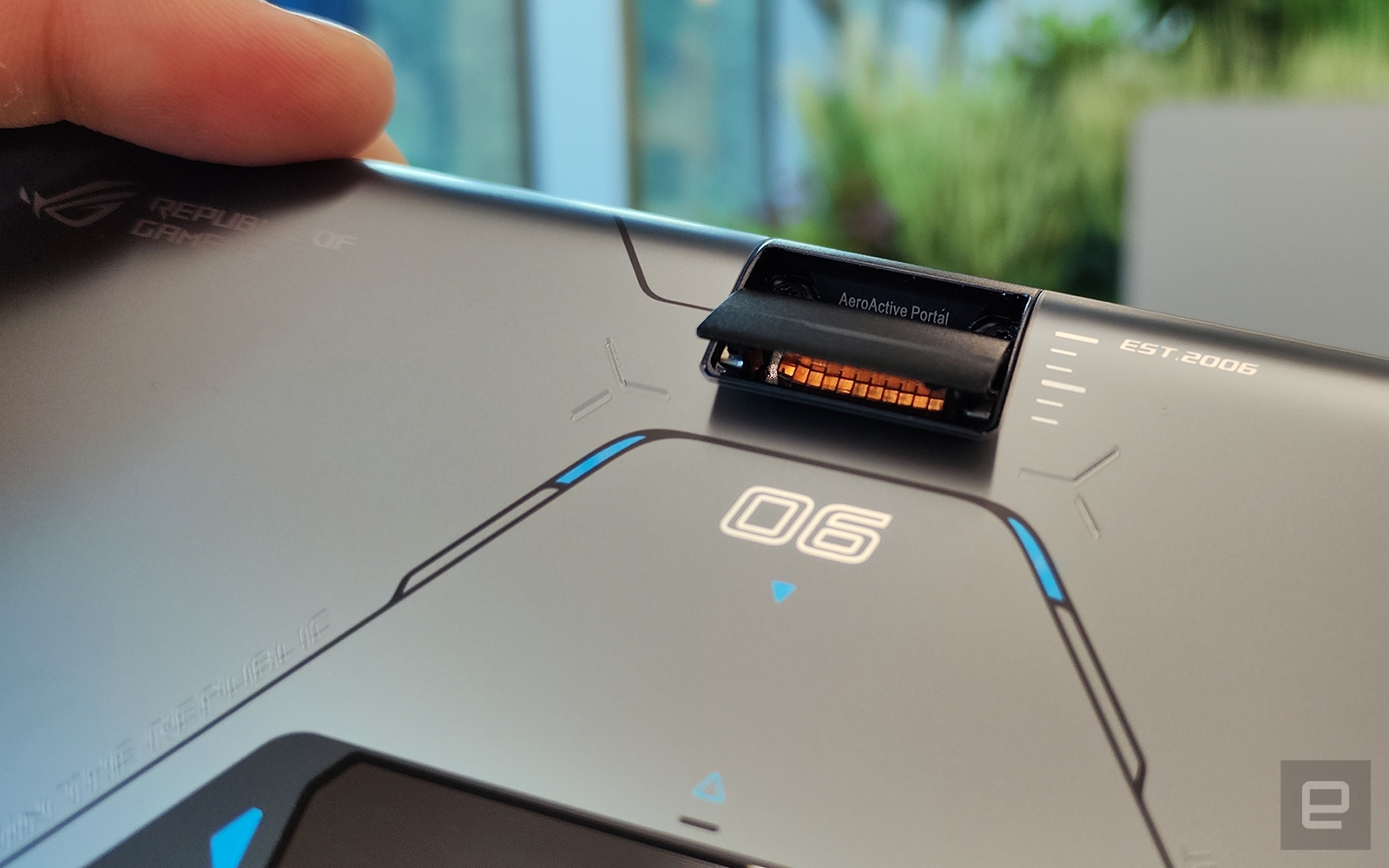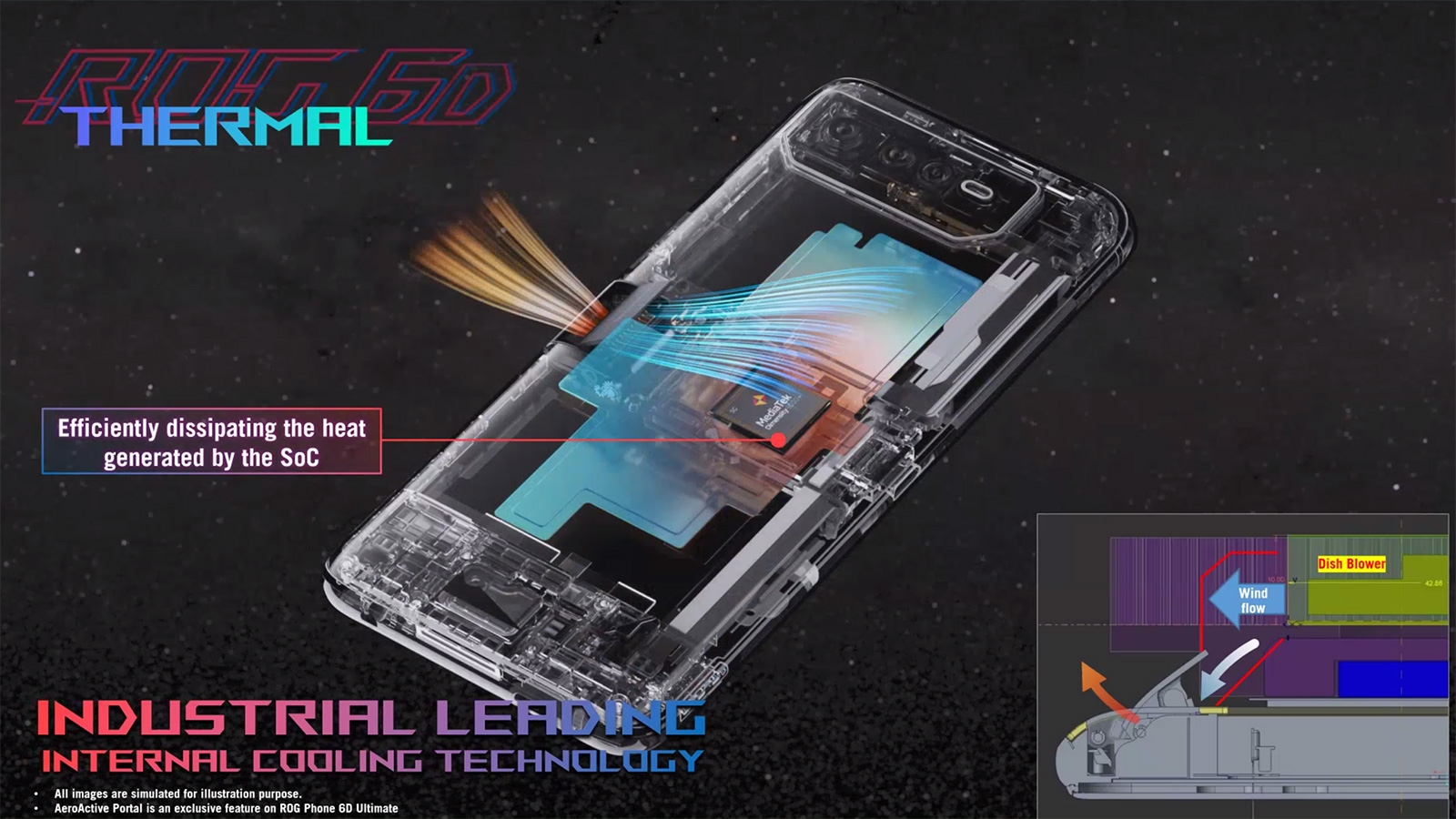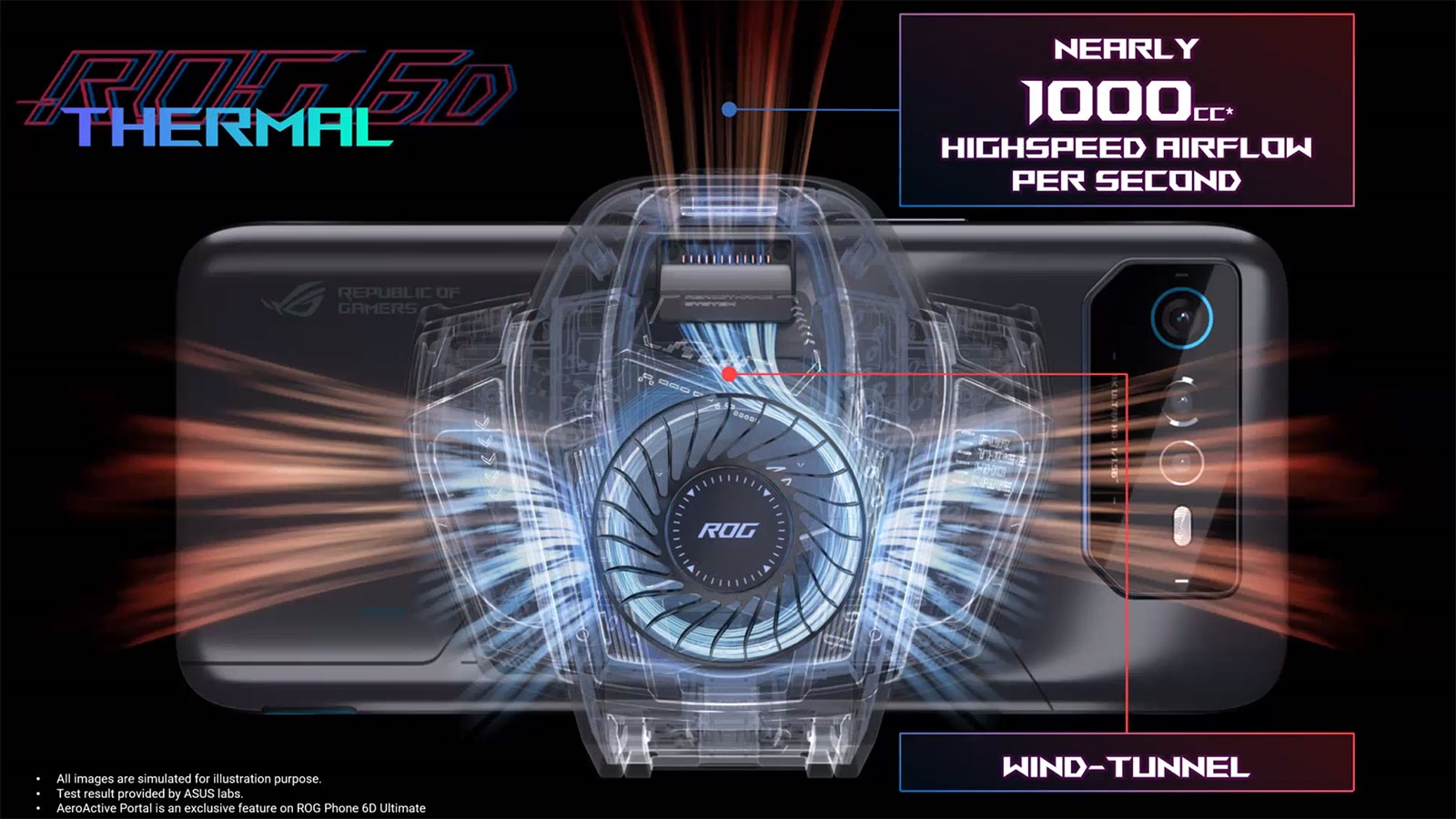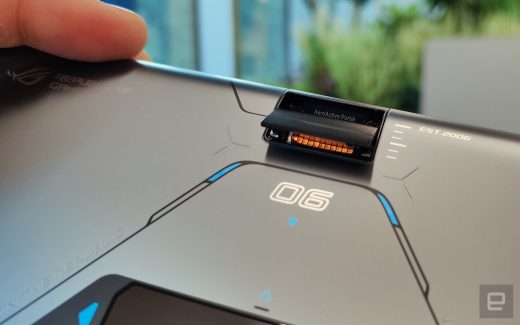ASUS’ ROG Phone 6D Ultimate has an even more elaborate cooling system
The ASUS ROG Phone 6 has a ‘wireless’ thermoelectric cooler add-on
This is the first clip-on Peltier cooler that doesn’t require external power.

Following the ROG Phone 5 and 5s, ASUS decided to skip Qualcomm’s Snapdragon 8 Gen 1 in favor of the more efficient 8+ Gen 1, which brings us to the new ROG Phone 6 series today — almost a year after the 5s. In a nutshell, this beastly gaming phone is all about its faster 165Hz 6.78-inch display, 720Hz touch sampling rate, up to 18GB of RAM, up to 512GB of storage, bigger 6,000mAh battery, enlarged internal cooling system and IPX4 splash resistance, in addition to its handy ultrasonic triggers and proven audio performance by Dirac. The most notable change, however, lies within the revamped clip-on cooler, which has now integrated a thermoelectric chip and yet doesn’t require external power.
This new AeroActive Cooler 6 is noticeably bulkier than before, partly because of its larger, more ergonomic physical buttons — and there are now four of them instead of just two. It also has a bigger kickstand that flips out from the bottom (though not necessary), and there’s a spring-loaded clamp at the top to secure (and activate) the cooler. The new Peltier cooling chip inside — positioned right over the phone’s processor when mounted — is sandwiched between the fan and a large piece of copper plate, and there’s also a humidity sensor nearby to help avoid condensation.

You can toggle between four cooling modes in the updated Armoury Crate app’s console: “Smart” is basically automatic, “Cool” is fan only, “Frosty” is fan plus Peltier chip, and “Frozen” is pushing the Peltier chip to the max, but this is only available when there’s external power plugged into the cooler. ASUS claims that in “Frozen” mode, the AeroActive Cooler 6 can lower the ROG Phone 6’s surface temperature by up to a staggering 25 degrees Celsius. The cool air blowing out of the two sides serves as a nice bonus for gamers with sweaty palms (like me).
The company also provided some figures from more realistic scenarios. After a 60-minute session in the notoriously resource-intensive Genshin Impact (at 60Hz), “Frosty” mode lowered the phone’s surface temperature from 44.8 degrees Celsius to 37.2, and “Frozen” mode took it down further by one degree. Under the same test environment, the ROG Phone 6 was apparently able to maintain an average frame rate of 59.7 fps while staying cool at 37.2 degrees Celsius in “Frosty” mode, whereas the iPhone 13 Pro Max apparently reached a lower 56.8 fps but higher 46.3 degrees Celsius, and the Samsung Galaxy S22 Ultra allegedly only managed 47.3 fps while reaching 47.9 degrees Celsius. This goes to show how cooling is key to maintaining a stable frame rate over a long period.

Sadly, the AeroActive Cooler 6 — along with its own bumper case — is an optional accessory for the ROG Phone 6 series, so you’ll likely have to pay extra for this handy piece of kit. But there’s some good news for existing fans: ASUS plans to release a variant of this attachment for the ROG Phone 5 and 5s as well, and it’ll make use of the old pogo pins instead of the USB-C side port. Release date to be announced later.
The ROG Phone 6 series comes in two flavors: the regular ROG Phone 6 and the higher-end ROG Phone 6 Pro, with the main difference being the latter has the small “ROG Vision” PMOLED display on the back for showing off customizable animation graphics, as opposed to just having an RGB-illuminated ROG logo. Internally, the Pro packs up to 18GB of LPDDR5 RAM instead of just 16GB. The trade-off — if you want to call it that — on the Pro is that it only comes in “Storm White,” while the regular model also offers a “Phantom Black” version. Save for the different camera module layout, “ROG Vision” positioning and printed graphics, the two ROG Phone 6 variants bear a strong resemblance to their immediate predecessors — to the point where they can share the same glass screen protector and ROG Clip controller.

The modular Kunai 3 Gamepad — now available in white as well as black — has once again been granted a life extension by way of a bumper designed for the ROG Phone 6. If you already have this controller since the ROG Phone 3 or 5, you’ll only need to get the new bumper in order to attach these Joy-Con-like sticks. Or you can just slot them into the same old gamepad grip and use the entire assembly wirelessly via Bluetooth.
The ROG Phone 6 packs an improved (apparently) main camera featuring a 50-megapixel Sony IMX766 sensor, along with a 13-megapixel ultra-wide camera and a 5-megapixel macro camera. On the other side, there’s a 12-megapixel selfie camera with a Sony IMX663 sensor — as seen on the compact Zenfone 8. The main rear camera is capable of shooting videos at up to 8K@24fps, though I’d imagine most people would default to 4K@60fps to get the best of both worlds.
On the software side, the ROG Phone 6 runs on Android 12 with ROG UI (you can switch to the less flashy Zen UI), with ASUS promising at least two major OS updates and at least two years of security updates. There’s the usual Armoury Crate app which is mainly for accessing your game library, as well as the console for customizing your system lighting, the rear “ROG Vision” screen (6 Pro only, of course), the AirTriggers and more. When in a game, you can toggle the redesigned “Game Genie” dashboard by swiping in from any of the two top corners of the screen while in either orientation. Here, you can quickly toggle the screen frame rate, key mapping, screen recording, performance modes, do not disturb, crosshair and more.
The new AirTriggers 6 now lets you map up to 14 specific touch points, and you get a total of nine input methods with these two ultrasonic buttons, including the new “press and lift” — basically toggling one set of actions for pressing down on the trigger, and then toggling another set of actions when lifting from the trigger. That said, casual gamers like myself will likely just use the classic tap (to fire) and maybe slide (to reload). If needed, you can also map motion gestures with touch points in Armoury Crate.
The ROG Phone 6 series includes a bumper case and a 65W USB-PD charger (which takes just 42 minutes for a full charge). As far as availability goes, ASUS has only shared that the ROG Phone 6 series will start from €999 (around $1,000) for the 12GB RAM + 256GB storage configuration in Europe, whereas the ROG Phone 6 Pro will only have one version in Europe: 18GB RAM with 512GB storage for €1,299 (around $1,300). Prices and models will obviously vary across different countries, so stay tuned for further updates.
(37)


